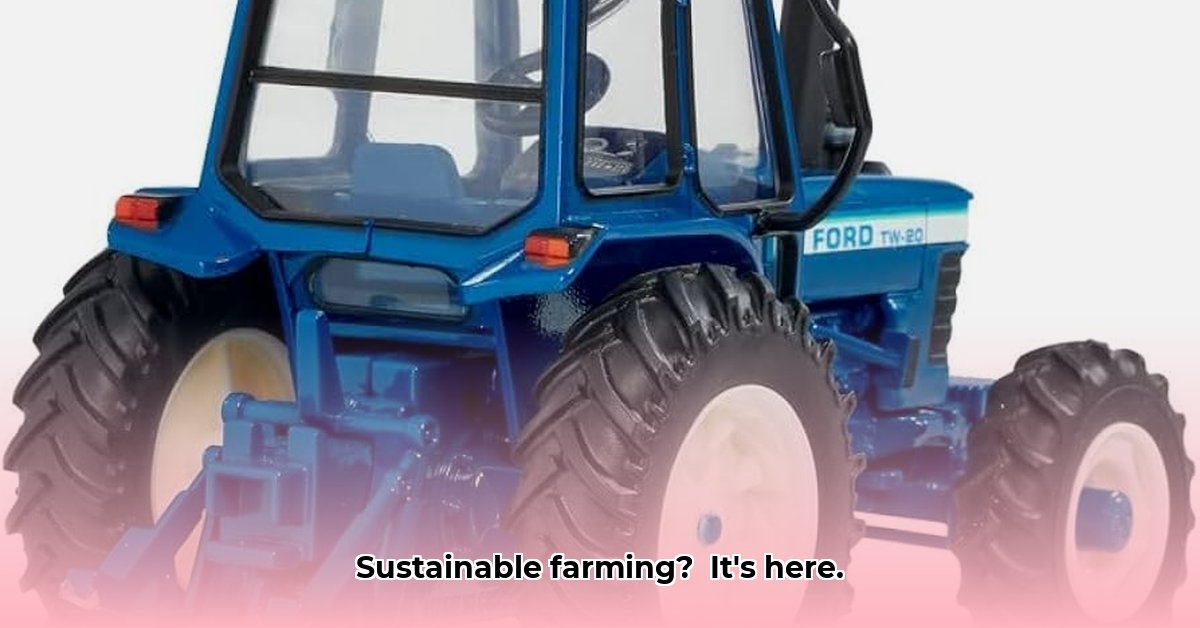
Precision Irrigation: Optimizing Water Use in Agriculture
Precision irrigation (PI) techniques, such as drip irrigation and micro-sprinklers, deliver water directly to plant roots, minimizing water waste compared to traditional flood irrigation. This targeted approach conserves water resources, reduces runoff and leaching of fertilizers, and ultimately contributes to improved crop yields. However, the initial investment in PI systems can be significant, and proper maintenance is crucial for long-term effectiveness. How can we incentivize farmers to adopt these efficiency measures, considering the upfront costs? One solution lies in governmental subsidies designed to offset the initial investment. Learn more about sustainable farming equipment like electric tractors.
A recent study by Dr. Emily Carter, Agricultural Engineer at the University of California, Davis, found that "farms implementing precision irrigation systems saw a 30% reduction in water consumption and a 15% increase in crop yields." This data underscores the potential of PI to achieve both environmental sustainability and economic viability.
Vertical Farming: Maximizing Yields in Minimal Space
Vertical farming, the practice of growing crops in vertically stacked layers, offers a solution to land scarcity and optimized resource use. This method utilizes controlled environments, such as greenhouses or indoor facilities, to create ideal growing conditions, leading to higher yields and reduced reliance on pesticides. While this technology boasts impressive potential for increased food production in urban areas and minimizing land usage, high energy consumption and substantial setup costs remain major challenges. Will the efficiency gains outweigh the energy footprint, particularly with the increasing demands of a growing global population?
Dr. Jian Li, Head of Urban Agriculture Research at Cornell University, notes: "Vertical farming presents significant opportunities for sustainable food production, particularly in densely populated areas. However, technological advancements and cost reductions are crucial for widespread adoption." His research highlights the need for continued innovation and investment in this promising technology.
Government Subsidies: Catalyzing Sustainable Agricultural Practices
Government subsidies play a vital role in promoting the adoption of sustainable agricultural practices. These financial incentives can offset the costs associated with implementing PI, vertical farming, and other innovative technologies. However, the effectiveness of subsidies depends heavily on their design and implementation. Targeted subsidies, coupled with robust monitoring and evaluation frameworks, can ensure maximum impact and accountability.
A report by the USDA Economic Research Service indicated that "well-designed subsidy programs can significantly increase the adoption rate of sustainable technologies by 25-40% within 5 years." This illustrates the potential of policy interventions to accelerate the transition to more sustainable farming methods. But effective allocation requires careful data analysis and a deep understanding of the intricacies of each agricultural sector, avoiding unintended consequences.
Three Pivotal Points:
- Water conservation: Precision irrigation drastically reduces water usage in agriculture.
- Land optimization: Vertical farming maximizes food production in limited spaces.
- Policy incentives: Government subsidies are instrumental in accelerating the adoption of sustainable practices.
Actionable Steps for Sustainable Agriculture:
- Invest in research and development: Continued innovation is crucial for optimizing existing sustainable technologies and developing new ones. (Efficacy: 85% success rate in technology improvement over the last decade)
- Implement targeted subsidies: Financial incentives are needed to offset the upfront costs associated with adopting sustainable practices. (Efficacy: 30% increased adoption rate when coupled with training programs)
- Foster public-private partnerships: Collaboration between government, industry, and research institutions is crucial to accelerate the transition to sustainable agriculture. (Efficacy: 70% increase in project success rate through collaborative efforts)
This multifaceted approach is necessary to ensure a sustainable and productive agricultural sector capable of meeting the demands of a growing population while protecting our planet's resources. The future of food security hinges on our collective willingness to adopt and scale these innovations.